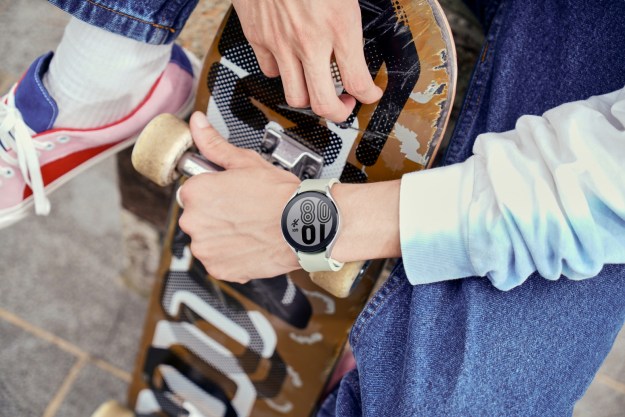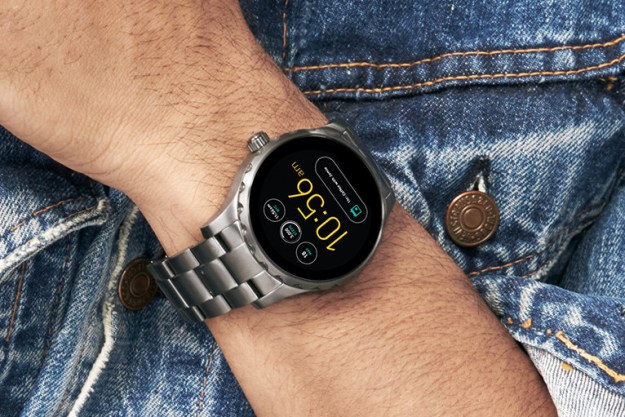Fitness trackers, meet your match. AmpStrip’s super thin fitness wearable and heart rate monitor sticks right to your skin.
Perhaps the biggest problem with wearable fitness trackers this year is their massive size. Few companies have figured out a way to minimize the bulk of fitness-tracking technology, and batteries almost always pose a problem. However, a recently launched Indiegogo campaign called AmpStrip aims to solve these problems.
AmpStrip is a super slim fitness tracker and heart-rate monitor that sticks right onto your skin like a band aid. It packs all the power of a Fitbit, minus the screen, into this remarkably thin package. At first glance, it seems hard to believe, but the company showed off multiple working prototypes at CES 2015.
Incredible fitness tech that fits in a band aid
Perhaps the most remarkable thing about AmpStrip is its size. The wearable measures 3.5 inches long, 1 inch wide, and less than one quarter of an inch thick. It looks like a really big Band Aid with an oval hole in the middle, and it only weighs 0.4 ounces. There are two parts to the AmpStrip: the wearable itself, which is packed with sensors and a battery, and the adhesive strip which connects the tech to your skin.
Earlier prototypes were much less flexible and chunky, but after months of working the silicon and components down to a reasonable size, the AmpStrip looks incredibly thin and flexes like a silicon watch strap. It’s inconspicuous, and you can wear it right under your clothes. The AmpStrip team said that after a while, you completely forget that you’re wearing it.
Each adhesive strip lasts three to seven days, even if you wear it in the shower or during an intensely sweaty workout. AmpStrip told us the strips are so durable because the company uses competition-grade adhesive strips that are bio-compatible to ISO 10993, which is the standard for most body adhesives used in hospitals and elsewhere. Once you’re done with a strip, you simply pop on a new one, though you should probably charge your AmpStrip first.
The AmpStrip’s 20 mA wireless rechargeable battery needs charging on a special pad about once a week. Coincidentally, that’s also the maximum lifespan of the adhesive strips. The company told Digital Trends that the AmpStrip should charge within a few hours, so you won’t miss out on too much data while it’s juicing up.
While you’re wearing the device, an ECG sensor monitors your heart rate, a 3-axis accelerometer keeps tabs on your activity, and a skin-proximity thermistor tracks your skin temperature. You can check out all these metrics in the company’s app to see how well your workout went. The AmpStrip stores your data and sends it off to your phone whenever you sync with the app via Bluetooth LE.
It’s coming this summer
We saw a couple of early prototypes in action, as well as the newly finished design for the final product. The company is fine-tuning the AmpStrip before it goes into production, and plans to ship the devices to early backers in June 2015. When it retails, it will cost $150 and every box of 30 adhesives will run you $30. That means it’s not exactly the cheapest fitness tracker out there, but it looks very intriguing, and may just be a hint of things to come in the wearable world this year.
We’ll be reviewing the device in the future, so stay tuned. In the meantime, you can check out the Indiegogo campaign and the AmpStrip website.
Highs
- Slim, lightweight design
- Heart rate and fitness tracking
- Waterproof
- Rechargeable battery lasts 7 days
Lows
- Not available yet
- Expensive price
- You have to buy adhesives






